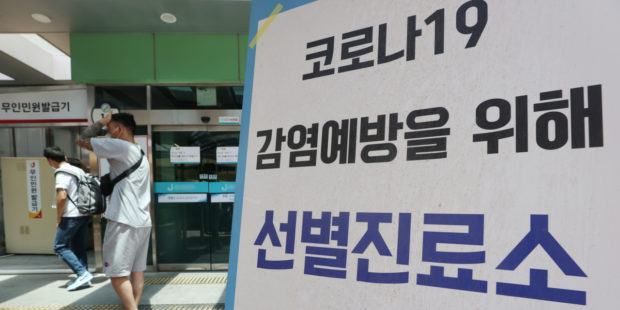SEOUL — South Korea’s new COVID-19 cases topped 10,000 for the second consecutive day, highlighting the risk of a resurgence in the country during the summer season that some experts have pointed out.
During the 24 hours of Saturday, the country added 10,059 COVID-19 cases, bringing the total caseload to 18,389,611, according to the Korea Disease Control and Prevention Agency said.
The country added eight COVID-19 deaths, raising the death toll to 24,570. The fatality rate now stands at 0.13 percent.
The number of critically ill patients remained 53, the same as the previous day.
Daily infections commonly tend to spike on weekdays and decrease over the weekend when fewer people are tested. But for this past week, the number of daily infections did not show the usual trend and increased instead, increasing the possibilities for further increases this week.
On Friday, the country’s daily infections reached 10,715, up 3,925 from 6,790 a week ago. The daily figure on Saturday was also up 3,813 from 6,246 a week prior.
From Monday to Thursday last week, the country’s daily COVID-19 cases increased week-on-week. On Monday, the number of COVID-19 infections went up 586 from a week before, which was followed by an on-week increase of 1,471 on Tuesday. On both Wednesday and Thursday, the country saw on-week increases of over 2,000.
The government explained that waning vaccine immunity and increasing social interactions following eased social distancing rules are fueling the number of daily COVID-19 cases recently.
The increasing number of COVID-19 infections from international arrivals to South Korea also contributed, according to the government. The figure on Saturday increased to 173 from the previous day’s 146.
Park Hyang, a high-ranking official at the KDCA, said South Korea is likely to experience a similar resurgence in COVID-19 cases to that which the US and UK are currently going through, hit mainly by omicron subvariants including BA.4 and BA.5.
Park also quoted local experts who anticipated the size of a resurgence this summer could reach 150,000 to 200,000 daily cases.
According to Park, the country is preparing antivirus measures, including hospital beds, and will be able to handle 150,000 daily COVID-19 patients.
Experts currently see BA.4 and BA.5 as likely to become dominant in South Korea in July and August. They have recommended that the government introduce booster shots that include components tailored to combat the two new subvariants.
Meanwhile, the country’s health authorities said Korea’s first patient infected with monkeypox is recovering. The government added that there have been no confirmed cases among 49 passengers who were aboard the same flight as the patient.
RELATED STORIES
South Korea eyes post-Omicron life, mulls ending COVID-19 isolation
South Korea removes post-travel quarantines for unvaccinated
South Korea to increase international flights to meet travel demand
Singapore, South Korea now quarantine-free for fully vaxxed visitors


